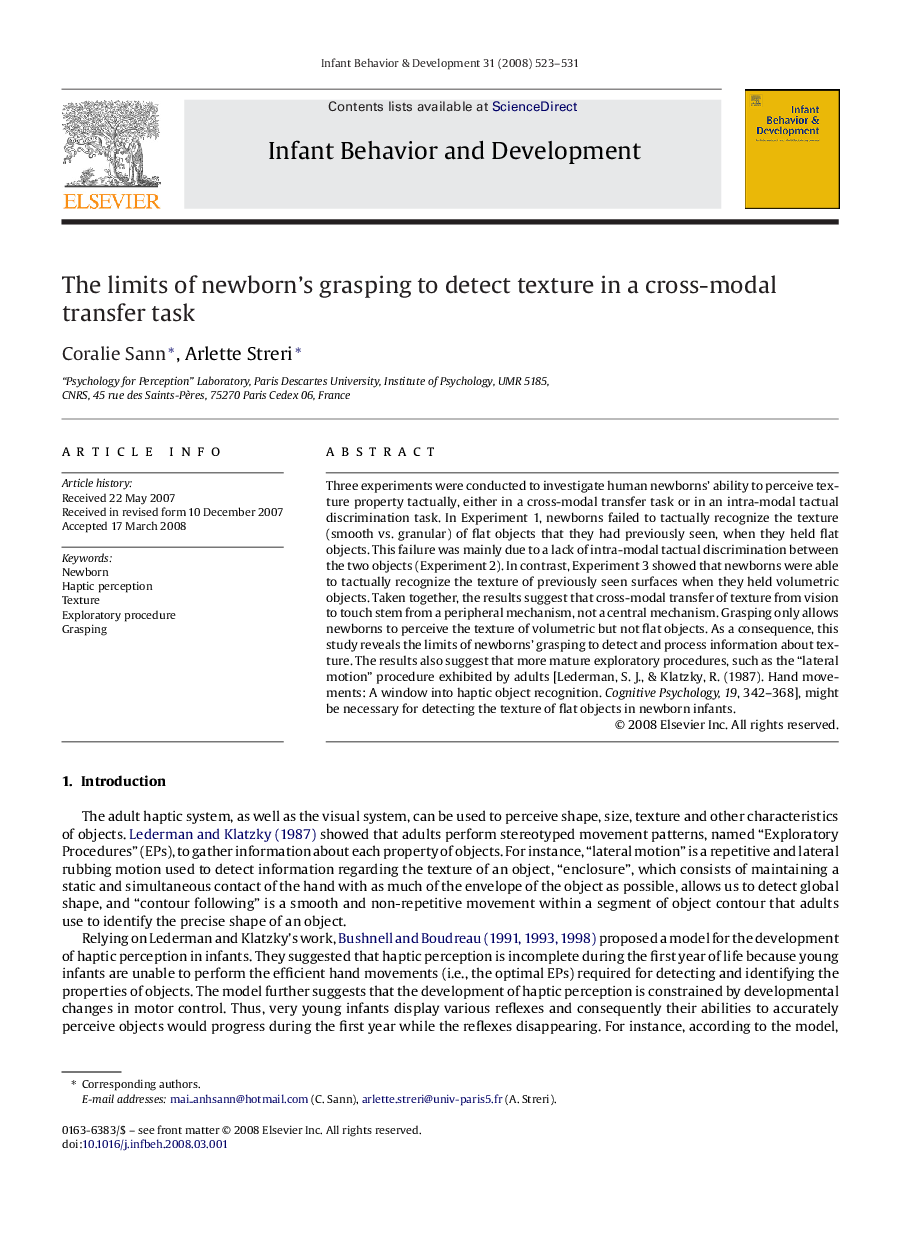| Article ID | Journal | Published Year | Pages | File Type |
|---|---|---|---|---|
| 917308 | Infant Behavior and Development | 2008 | 9 Pages |
Three experiments were conducted to investigate human newborns’ ability to perceive texture property tactually, either in a cross-modal transfer task or in an intra-modal tactual discrimination task. In Experiment 1, newborns failed to tactually recognize the texture (smooth vs. granular) of flat objects that they had previously seen, when they held flat objects. This failure was mainly due to a lack of intra-modal tactual discrimination between the two objects (Experiment 2). In contrast, Experiment 3 showed that newborns were able to tactually recognize the texture of previously seen surfaces when they held volumetric objects. Taken together, the results suggest that cross-modal transfer of texture from vision to touch stem from a peripheral mechanism, not a central mechanism. Grasping only allows newborns to perceive the texture of volumetric but not flat objects. As a consequence, this study reveals the limits of newborns’ grasping to detect and process information about texture. The results also suggest that more mature exploratory procedures, such as the “lateral motion” procedure exhibited by adults [Lederman, S. J., & Klatzky, R. (1987). Hand movements: A window into haptic object recognition. Cognitive Psychology, 19, 342–368], might be necessary for detecting the texture of flat objects in newborn infants.
